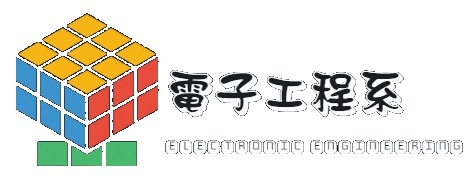Introduction
History
Over thirty years have past since our department was established, during which we have made great performance and achievements in graduate promotion, further study, employment and business startup and is reputed by all fields. Our department was established as the division of industrial electronics in December 1969 shortly after the school made its debut, and changed its name to the division of electronic engineering in 1973 as approved by the MOE. In July 1983, the evening session was added as rectified by the MOE, and the computer engineering section and the applied electronics section were set up under the division of electronic engineering. As the school was upgraded to Lunghwa Institute of Technology, our division was renamed as the Department of Electronic Engineering i n 1999. Junior college graduates were enrolled under the two-year program, and vocational college graduates, under the four-year program, and our department provides continuing education channels for graduates specialized in computer, electronics and other fields from nationwide junior colleges and vocational colleges. In 2002, the master's program was added to cultivate senior technological talents required for national economic development. With the school's support, our department continues to train and employ PhD teachers, add practice facilities for students and research facilities for teachers, and at the same time purchase precise teaching and research devices in recent years, all for further improvement. The master's program started recruiting students in 2004, and there are three classes under the four-year program and one class under the two-year program for the daytime session, two classes under the four-year program and one class under the two-year program for the continuing education division, and one class under the two-year program for the continuing education college. Currently, there are 16 assistant professors or above, 5 lecturers, composing a powerful faculty. There is one 3-storied department building (with an area of 3,000m 2 , not including common classrooms), including 14 rooms composed of practice classrooms for students and research rooms for postgraduates and 30 research offices for teachers.
All Previous Department Heads
1st Wang, Shih-kang
2nd Wang, Wen-Chih
3rd Lan, Tien-Ming
4th Lee, Chyi-Shyong
5th Yu, Kuo-Kan
6th Tasi, Chien-Hung
7th Su, Juing-Huei
8th Chen, Jung-Ming
9th Wu, Dong-Shiuh
10th Wang, Yen-Nien
11th H.L. Chiueh
12thWang, Yen-Nien
13th Yung-Yu Chen (Current Chairman)
Educational Goals
Over forty years have past since our department was established, during which we have made great performance and achievements in graduate promotion, further study, employment and business startup and are reputed by all fields. Currently, There is the master's program, three classes under the four-year technology program for the daytime session, one class under the four-year technology program for the continuing education division. Our department aims at cultivating technologists with hands-on experience in fields of information and electronics. In addition to the basic compulsory courses in electronics, curriculum design intends to promote students' study performance and expand professional fields. The elective courses are classified for the electronic circuit section, the computer section and the systems section respectively. All planned courses cover basic theories and related practical applications, as follows:
1.Computer Section
The curriculum design focuses on microcomputer system applications, multimedia and computer network engineering, and covers window programming design, system programming, database system and management, multimedia design, computer graphics, network analysis, internet programming design, etc, the practicability and generality of computer engineering being expanded. The section aims at training students from software system users to software system designers.
2.Systems Section
The curriculum design focuses on semiconductor engineering, IC design, signal processing and communication engineering, and covers communication fundamentals, digital signal processing, communication electronics, mobile communication system, digital communication system, optical fiber communication system, electromagnetism, microwave circuit design, etc. The section aims at cultivating technologists that master both theories and practical skills.
To match the demand of the related industries, the department strengthens its efforts in exchange with industries with respect to technologies and practice experience, playing its role in helping students to learn experience in R&D, design and application system development from relevant industries and building up its reputation and influence in related industries.



